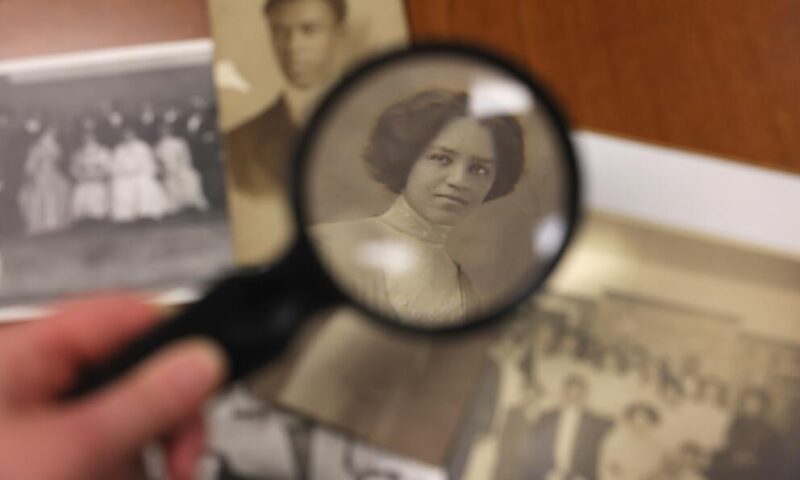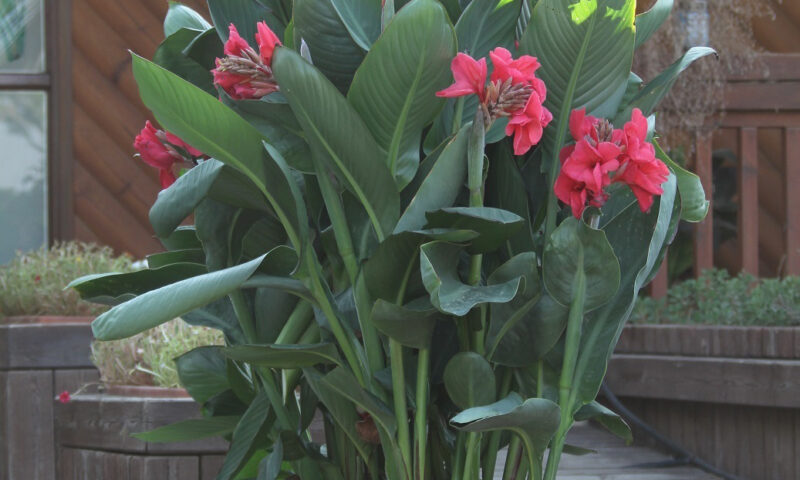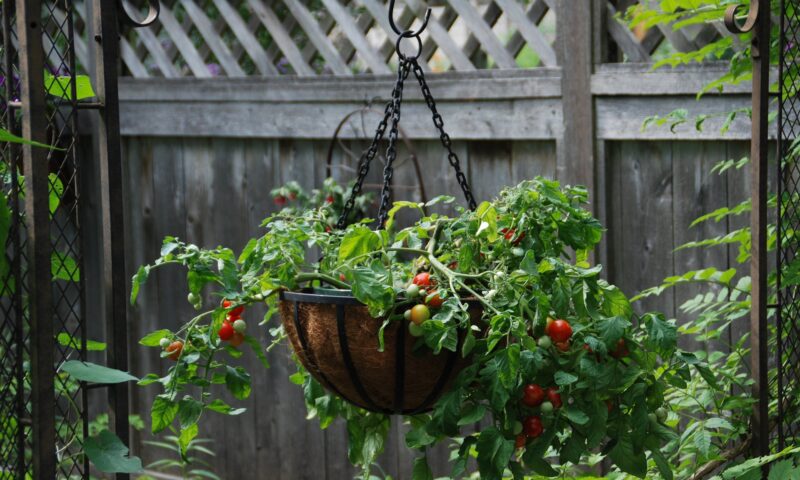A musician born in 1888: On the trail of Seattle’s early Black history
(Pictured: Looking through a magnifying glass at one of the early-1900s photographs from the family of Gertrude Harvey Wright. They’re part of the Black Heritage Society archives. Photo credit: Genna Martin/Cascade PBS)
By Jas Keimig
Cascade PBS
In a photograph dated 1916, a young woman and pianist named Gertrude Harvey Wright reads in her Seattle bedroom. She sits to the left of center in the photograph, her hair in a bun, her gaze cast downward onto the book in her lap. Various items — a phonograph, a dresser, a mirror, a sports banner and shelves — inhabit the rest of the picture. The walls are decorated with photo portraits of herself, loved ones, and her husband, George Wright. It’s a quiet, pensive glimpse into early Black society in the Emerald City, as seen through the personal space of a young woman.
Born in 1888 in Washington Territory (pre-statehood), Gertrude was among the first Black settlers in Seattle. The 1890 Census taken just two years after her birth reported a total of 286 Black people living in the city at the time, less than 1 percent of the total population.
Her parents, the Harveys, were prominent in the community — her father Charles was one of the charter members of the First AME Church (he helped construct the Capitol Hill building, and his name is still on its cornerstone) and ran an all-Black drama club, the DuBois Dramatic Club (of which Gertrude was a member).
After narrowly escaping the Great Seattle Fire in their downtown home in 1889, Charles built the family a residence on 29th Avenue in Madison Valley, where the Harvey family grew to 10.
A trained pianist and church organist, Gertrude made a name for herself in Seattle history as one of four women in the city’s first Black musicians’ union, the American Federation of Musicians’ Local 458, which at the time helped Black musicians find work.
Though the union’s tenure was brief — 1918 to 1924 — records show Gertrude was heavily involved in union negotiations and helped keep the organization alive as it splintered due to financial difficulties. Later, she taught piano at The Cornish School (now Cornish College of the Arts) in the mid-’30s.
Miss Gertrude sounded like one interesting cookie. And the Black Arts Legacies team at Cascade PBS was excited to profile her during Black History Month. We were tantalized by the prospect of tracing the early history of the Black community in Seattle, further back than we’ve gone in Black Arts Legacies stories so far.
I dove into the special archives at the University of Washington, mined deep into local newspaper archives, reached out to surviving families and loved ones, and called a few experts in the area. I found scattered evidence of Gertrude’s life up to 1942, when an announcement in the now-defunct newspaper The Enterprise said she and her husband would be moving to San Francisco, Calif. After that, her connections to Seattle seemed to vanish into thin air.
For the first time in my stint writing for Black Arts Legacies, I had a really hard time finding anything outside of photos and secondary sources about Gertrude’s life. Rather than regurgitating the scant information in other articles, my editors and I decided a meaningful profile of Gertrude was not to be, at least not this year.
All of this underscores the critical importance of the historians and descendants who have taken it upon themselves to record the lives of early Black pioneers and settlers in this region. The dead-ends themselves are a story about how Black history is both remembered and forgotten.
Truly, this deep research effort (would not be possible without the help of Stephanie Johnson-Toliver, president of the Black Heritage Society in Seattle. Since the late 1970s, the BHS has uplifted and shared the history of Black people in Washington through the acquisition, preservation, research and exhibition of photos, objects, documents, ephemera and oral histories. According to Blackpast.org, which is also Seattle-based, BHS has the largest public collection of Pacific Northwest historical memorabilia — a big deal.
In trying to follow the breadcrumbs of Gertrude’s story, I took a trip to BHS’ office (which shares space with the Museum of History and Industry’s repository) to sift through boxes upon boxes of the Wright family’s archive. Funnily enough, Gertrude’s niece, the late Jackie E.A. Lawson, co-founded BHS and kept records of her aunt’s family through the years.
Stephanie and I took turns going through six or seven boxes. I chanced upon beautiful photos of Gertrude’s family, pictures of her and her husband (also named George, like her father), her birth certificate and obituary, as well as diaries and photos of her other family members. In one blurry photo, Gertrude and George stand holding one another in front of a house — their own or someone else’s? The sun illuminates half of their smiling faces.
As I methodically made my way through these items, I felt connected to these tangible memories of a Black family who lived, loved, and made their home in this city when people who looked like them were relatively scant. I was moved by their persistence in making a community that reflected their own values and experiences, and their records were a testament to that effort.
While I wasn’t able to find much beyond fragments of Gertrude’s life (and nothing written from her own point of view), I did find myself more deeply connected to the early Black history of this city.
Source: Cascade PBS (cascadepbs.org), a non-profit newsroom covering the Pacific Northwest.



